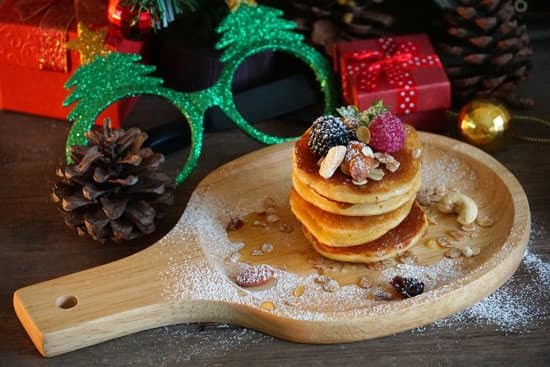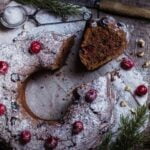The freshness of a decorated cake is a crucial factor in ensuring that it is enjoyable to eat, especially for special occasions. Understanding how long a decorated cake will stay fresh is essential for both bakers and consumers. Factors such as temperature, ingredients, and storage conditions can significantly impact the shelf life of a decorated cake, making it important to have this knowledge when preparing or purchasing one.
When it comes to the shelf life of a decorated cake, several factors come into play. The temperature at which the cake is stored, the ingredients used in its preparation, and the conditions under which it is kept all affect how long the cake will remain fresh. By understanding these factors, individuals can better preserve the quality of their cakes to ensure they are enjoyable for as long as possible.
In this article, we will delve into the various factors that affect the shelf life of decorated cakes, including tips on proper storage techniques to maximize freshness and prevent spoilage. Additionally, we will provide insights into how different types of decorated cakes-such as buttercream, fondant, and whipped cream cakes-differ in terms of their expected shelf lives.
Lastly, we will discuss methods for extending the shelf life of decorated cakes and provide guidance on determining whether a cake is still fresh before serving.
Factors That Affect Shelf Life
When it comes to the shelf life of a decorated cake, there are several factors that can influence how long it will stay fresh. One of the most important factors is temperature. Cakes stored at room temperature are generally best consumed within a few days, while refrigerated cakes can last longer due to the cooler environment slowing down the rate of spoilage.
Additionally, the ingredients used in the cake can play a significant role in determining its shelf life. Cakes made with fresh dairy or fruit may have a shorter shelf life compared to cakes made with artificial flavorings and preservatives. The presence of moisture-rich ingredients like fruits and custards can also impact how quickly a cake will spoil.
Storage conditions are another crucial factor that affects the shelf life of decorated cakes. Properly storing a cake in an airtight container or wrapped tightly in plastic wrap can help maintain its freshness for longer periods. Exposure to air, light, and humidity can all contribute to premature spoilage.
In summary, understanding these factors is essential for anyone looking to keep their decorated cakes fresh for as long as possible. By paying attention to temperature, ingredients, and storage conditions, bakers can ensure that their creations remain delectable for their intended shelf life.
| Factor | Influence on Shelf Life |
|---|---|
| Temperature | Determines how quickly the cake will spoil; cooler temperatures prolong freshness |
| Ingredients | Fresh dairy and fruit shorten shelf life; preservatives and artificial flavorings extend it |
| Storage conditions | Airtight containers and proper wrapping help maintain freshness |
How to Store a Decorated Cake
Storing a decorated cake properly is crucial in maximizing its freshness and shelf life. The way a cake is stored can significantly impact how long it will stay fresh, so it’s important to follow some key tips for storage.
One of the most important factors in storing a decorated cake is the temperature. Cakes should be stored in a cool, dry place away from direct sunlight and heat sources.
This means that refrigeration is often the best option for storing a decorated cake, especially if it contains perishable ingredients such as cream or fruit fillings. However, certain types of cakes with stable buttercream or fondant decorations can be stored at room temperature, as long as the environment is not too warm.
When refrigerating a decorated cake, it’s crucial to properly wrap it to prevent drying out. Airtight containers or plastic wrap can help keep the cake moist and fresh for longer periods. On the other hand, if the cake needs to be stored at room temperature, placing it under a cake dome or in a bakery box can help protect it from drying out while still allowing air circulation.
To determine if a decorated cake should be stored in the refrigerator or at room temperature depends on various factors such as ingredients used, climate conditions (temperature and humidity), and how soon you plan on serving the cake. By following these storage tips, you’ll maximize the shelf life of your decorated cakes and ensure they stay fresh for as long as possible.
| Storage Tips | Additional Information |
|---|---|
| Refrigerate cakes with perishable fillings | Cakes with cream or fruit fillings are best refrigerated to prevent spoilage |
| Properly wrap cakes when refrigerating | Using airtight containers or plastic wrap helps prevent drying out |
| Determine storage based on ingredients and climate | Consider factors like humidity and planned serving time when deciding between refrigerator or room temperature storage |
Signs of Spoilage
One of the key factors in understanding the shelf life of a decorated cake is being able to recognize the signs of spoilage. It is important to be able to identify when a cake has gone bad in order to prevent any potential illnesses or unpleasant experiences for those consuming it.
Indicators of Spoilage
There are several indicators that can signal that a decorated cake has spoiled. One of the most obvious signs is the presence of mold on the surface of the cake. Mold can appear as fuzzy, discolored patches and should never be consumed.
In addition, if the cake develops an off flavor or aroma, it is likely no longer safe to eat. Changes in texture can also indicate spoilage, such as a dry or gummy texture that differs from the cake’s original state.
How to Identify Mold, Off Flavors, and Changes in Texture
When inspecting a decorated cake for signs of spoilage, it is important to thoroughly examine both the surface and interior of the cake. Mold may not always be visible on the exterior, so cutting into the cake can reveal any hidden growth.
Similarly, tasting or smelling small samples from various parts of the cake can help detect any off flavors or aromas that might indicate spoilage. Lastly, performing a tactile assessment by feeling for changes in texture throughout the entire cake can also help determine if it has gone bad.
By being able to recognize these indicators and taking appropriate action when they are present, individuals can ensure that they are serving only fresh and safe cakes to their guests, maximizing enjoyment and minimizing health risks.
Shelf Life of Different Types of Decorated Cakes
Buttercream Cakes
When it comes to buttercream cakes, the shelf life can vary depending on the specific ingredients and storage conditions. Typically, a buttercream cake can stay fresh for 2-4 days if stored properly. The key to maximizing the freshness of a buttercream cake is to keep it refrigerated in an airtight container. Additionally, it’s important to avoid exposing the cake to fluctuating temperatures, as this can accelerate spoilage.
Fondant Cakes
Fondant cakes have a longer shelf life compared to buttercream cakes. This type of decorated cake can stay fresh for 4-5 days when stored correctly. The fondant layer acts as a protective barrier, helping to seal in moisture and preserve the cake’s texture.
It’s recommended to store fondant cakes in a cool, dry place away from direct sunlight and heat sources. Refrigeration is also an option for extending the shelf life of fondant cakes, but it’s important to allow the cake to come to room temperature before serving.
Whipped Cream Cakes
Whipped cream cakes have a shorter shelf life compared to buttercream and fondant cakes due to their more delicate nature. Generally, whipped cream cakes will stay fresh for 1-2 days when refrigerated. It’s crucial to keep whipped cream cakes chilled at all times to prevent the cream from becoming runny or developing off flavors. In some cases, stabilizers such as gelatin can be added to the whipped cream during preparation to help extend its shelf life.
Understanding the expected shelf life of different types of decorated cakes is essential for both professional bakers and home cooks who want to serve high-quality desserts. By following proper storage guidelines and being mindful of factors that affect freshness, individuals can ensure that their decorated cakes remain delicious and safe for consumption.
Extending Shelf Life
When it comes to extending the shelf life of a decorated cake, there are several techniques and methods that can be used to keep your creation fresh for as long as possible. By taking the appropriate steps, you can ensure that your cake stays delicious and appealing for an extended period of time.
Some techniques for extending the shelf life of a decorated cake include:
- Proper storage: Store the decorated cake in an airtight container or tightly wrapped in plastic wrap to prevent exposure to air and moisture.
- Refrigeration: For cakes with perishable fillings or frostings, refrigeration is essential to prevent spoilage. However, be sure to bring the cake to room temperature before serving to ensure the best taste and texture.
- Freezing: If you don’t plan on consuming the cake within a few days, consider freezing it. Wrap it tightly in plastic wrap and then in aluminum foil before placing it in the freezer. This can extend the shelf life of the cake by several months.
In addition to these techniques, using preservatives and stabilizers in the baking process can also help prolong the freshness of a decorated cake. These additives can inhibit mold growth and prevent staleness, keeping your cake tasting fresh for longer periods. However, it’s important to use these additives properly and according to recommended guidelines to ensure food safety.
How to Tell if a Decorated Cake Is Still Fresh
When it comes to enjoying a beautifully decorated cake, one of the most important factors to consider is its freshness. Knowing how long a decorated cake will stay fresh is crucial in ensuring that it tastes as delicious as it looks.
Several factors can affect the shelf life of a decorated cake, including temperature, ingredients used, and storage conditions. In this section, we will discuss how to determine if a decorated cake is still fresh and offer some tips on maximizing its shelf life.
Factors Affecting Shelf Life
Several factors impact the freshness of a decorated cake. Understanding these factors can help in determining the expected shelf life of the cake.
- Temperature: The temperature at which a cake is stored significantly affects its freshness. Cakes stored at room temperature are likely to have a shorter shelf life compared to those refrigerated or kept in a cool environment.
- Ingredients: The quality and type of ingredients used in the cake also play a role in determining its shelf life. Fresh, high-quality ingredients are more likely to result in a longer-lasting cake.
- Storage Conditions: Proper storage is key to maintaining the freshness of a decorated cake. Factors such as exposure to air, humidity levels, and packaging all influence how long the cake will stay fresh.
Tips for Maximizing Shelf Life
To ensure that your decorated cake stays fresh for as long as possible, follow these helpful tips for proper storage:
- Refrigeration vs. Room Temperature Storage: Depending on the type of frosting and filling used, some cakes may be best stored in the refrigerator while others can be safely kept at room temperature. Always refer to specific storage instructions for your particular type of decorated cake.
- Air-tight Packaging: Store the cake in an air-tight container or wrap it tightly with plastic wrap to prevent air exposure, which can lead to drying out and loss of freshness.
- Avoid Moisture: Excess moisture can cause decorations to wilt and spoil the texture of the cake. Store the cake away from humid environments and avoid exposing it to direct sunlight or heat sources.
By understanding these factors and following proper storage techniques, you can extend the shelf life of your decorated cake and enjoy it at its best for as long as possible.
Conclusion
In conclusion, it is important for any baker or cake decorator to understand the factors that impact the shelf life of a decorated cake. Factors such as temperature, ingredients, and storage conditions can all play a role in determining how long a cake will stay fresh. By paying attention to these factors and following proper storage techniques, it is possible to extend the shelf life of a decorated cake and preserve its quality.
Properly storing a decorated cake is essential for maximizing its freshness. Whether refrigerated or stored at room temperature, it is important to follow specific guidelines to ensure the cake stays fresh for as long as possible. Additionally, using preservatives and stabilizers in the baking process can be beneficial in extending the shelf life of a decorated cake.
Frequently Asked Questions
How Do You Keep a Decorated Cake Fresh?
Decorated cakes can be kept fresh by storing them in a cool, dry place away from direct sunlight and heat. It’s best to use an airtight container or cake box to prevent the cake from drying out.
How Far in Advance Can You Decorate a Cake?
Cakes can typically be decorated one to two days in advance, depending on the type of frosting and fillings used. Buttercream and cream cheese frostings should be used within a day or two, while fondant-covered cakes can be decorated several days ahead.
How Long Can a Decorated Cake Last?
The longevity of a decorated cake depends on the ingredients and storage conditions. Generally, most decorated cakes can last for 2-3 days at room temperature or 7-10 days if refrigerated. However, it’s important to consider any perishable fillings or frostings when determining shelf life.

Welcome to our cake decorating blog! My name is Destiny Flores, and I am the proud owner of a cake decorating business named Cake Karma. Our mission is to provide delicious, beautiful cakes for all occasions. We specialize in creating custom cakes that are tailored specifically to each customer’s individual needs and tastes.





